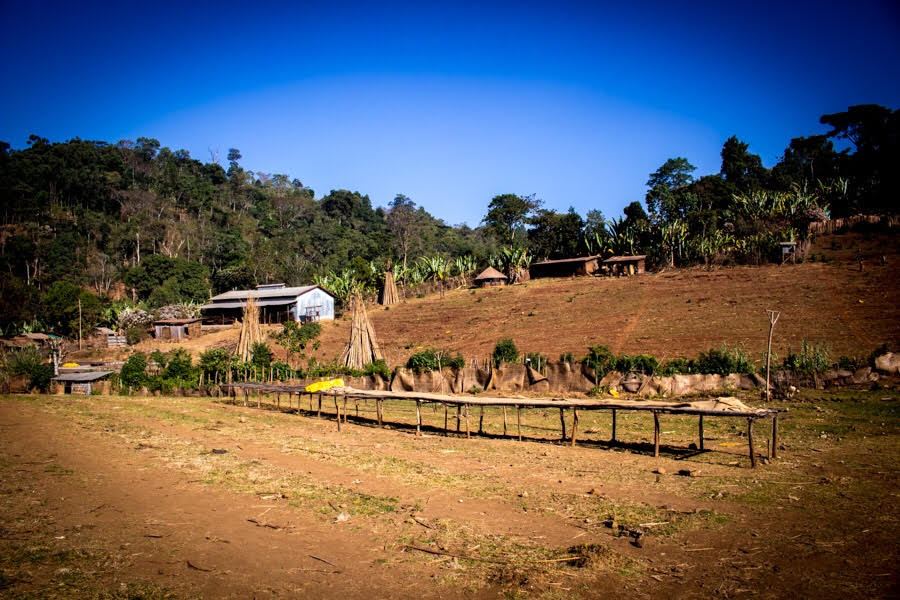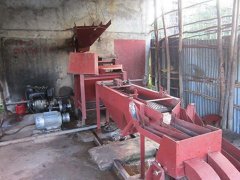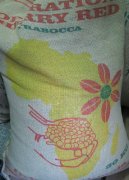Yega Xuefei's correct drink Yega Xuefei-Aricha Ariga Manor Information introduction

Professional barista communication, please pay attention to coffee workshop (Weixin Official Accounts cafe_style)
Country: Ethiopia
Estate: Aricha
Category: Grade1
Altitude: 1950-2100 m
Aroma: Strawberry/, Lover Fruit, Orange, Earthy Mango
Flavor: Berry, Cocoa, Grapefruit, Intense greasiness, Cognac, Mango, Pineapple
One of Ethiopia's most prized coffees, Yirgacheffe is grown in the lush highlands of Misty Valley. This particular variety is naturally solarized, which means that the beans are dried, not after fruit removal. Ethiopia Yirgacheffe Due to clay properties, the distinctive red hue in the soil shows characteristic brightness in the cup test. Its light red fruit aromas suggest citrus, berry, peach and pineapple.
This professional lot in southern Ethiopia comes from the small town of Aricha Keble in the Yirgacheffe region. Located at an altitude of 1,950 meters on the eastern slope of the dense green mountains of the misty valley.Yirgacheffe is an excellent coffee growing area, the farm covers an area of 1400 hectares, and the Aricha Keble area employs 700 farmers. This natural coffee is sunned on a high shelf. Over time, the cherry shells and mucous membranes dry in the sun. This process can take this unique coffee. As a hand brewed or enjoyed espresso, this coffee highlights strawberries, chocolate and roasted hazelnuts for dessert, combining rich creamy texture and citrus acidity.
Although washing and semi-tanning methods are used today, coffee was originally processed differently; one that did not require the use of machines produced just over the centuries. Thus, after coffee was first discovered in Ethiopia, this solarization process has been used for at least the past nine centuries.
In addition to any processes involving peeling and crushing, the drying process dries the whole coffee cherry in the sun, allowing the coffee bean to absorb all the flavors of the fruit aroma and mucus and amniotic layers. When the coffee sun is complete, its moisture content will drop to 10-12%. This is a predominantly manual process that uses very little, if any, machinery at any time, which means that solarization processes sometimes carry more risk because there is more room for human error.
After drying and shelling, it can be taken out from the cherry and sent out for shipment. The main problem with this method is that the flavor of all coffee beans is usually uneven, which means rigorous tasting and testing must be carried out to ensure that coffee is evenly flavored. Usually, beans from the same batch must be separated from each other so that only the higher quality beans remain in the higher quality batch.
Solarization (or "natural processing") can also be done in different ways by so-called "pasa" techniques. Coffee cherries are placed on branches for further ripening and drying there, rather than requiring the use of elevated trellises to dry the cherries. This produces a slightly different taste, but still particularly dry processed coffee.
Coffee produced by these methods will have interesting and unusual flavors, with heavier taste and more body, while also showing less acidity. They are also more environmentally friendly, because once the final product is produced, less waste is generated.
Important Notice :
前街咖啡 FrontStreet Coffee has moved to new addredd:
FrontStreet Coffee Address: 315,Donghua East Road,GuangZhou
Tel:020 38364473
- Prev

Description of the flavor of Yega Chefee Coffee
Communication of professional baristas Please pay attention to Coffee Workshop (Wechat official account cafe_style) small Ethiopian coffee farmers generally grow no more than 1 hectare and harvest very few raw beans to make a living by growing coffee alone. They also have to grow other cash crops, such as bananas are widely grown in Wenago/Wanago. In order to stabilize the price of coffee
- Next

Yega Chuefei Red Cherry Project Story Chelba Charbaye Coffee beans characteristics
For the exchange of professional baristas, please follow the coffee workshop (Wechat official account cafe_style) Product name: Yega Sheffield Gedeo Chalba Yirgacheffe Gedeo Chelba Home: Ethiopia Ethiopia producing area: Yega Sheffield Gedeo Yirgacheffe Gedeo and other grades: Grade 1 treatment method: sun treatment Natural Process species:
Related
- Detailed explanation of Jadeite planting Land in Panamanian Jadeite Manor introduction to the grading system of Jadeite competitive bidding, Red bid, Green bid and Rose Summer
- Story of Coffee planting in Brenka region of Costa Rica Stonehenge Manor anaerobic heavy honey treatment of flavor mouth
- What's on the barrel of Blue Mountain Coffee beans?
- Can American coffee also pull flowers? How to use hot American style to pull out a good-looking pattern?
- Can you make a cold extract with coffee beans? What is the right proportion for cold-extracted coffee formula?
- Indonesian PWN Gold Mandrine Coffee Origin Features Flavor How to Chong? Mandolin coffee is American.
- A brief introduction to the flavor characteristics of Brazilian yellow bourbon coffee beans
- What is the effect of different water quality on the flavor of cold-extracted coffee? What kind of water is best for brewing coffee?
- Why do you think of Rose Summer whenever you mention Panamanian coffee?
- Introduction to the characteristics of authentic blue mountain coffee bean producing areas? What is the CIB Coffee Authority in Jamaica?

